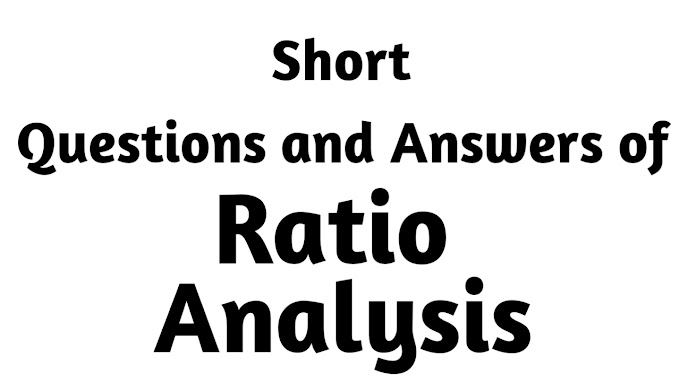Solvency Ratios
In a popular sense, solvency means that a business is able to pay its
liabilities as they become due. Insolvency means the business is unable to do
so. Whereas liquidity refers to the ability of a firm to meet its short-term
liabilities, solvency usually refers to the firm’s ability to meet long-term
liabilities. Solvency depends on profitability of the business. If a business.
Is not profitable in long-run, it will not be able to meet its debts. Solvency ratios
measure the extent to which the firm has been financed by debt. Following are
the important solvency ratios:
Debt Equity Ratio
Formula of Debt Equity Ratio = Long Term Debt/Shareholders’ Funds
This ratio should generally be less than one since it will show that the
claims of the owners are the greater than those of the lenders. It is also
considered unhealthy for a business to have more debt than equity. If the ratio
is more than one, it will indicate the high degree of debt in the capital
structure of the firm and, in effect, the risks of the enterprise are to be
borne mainly by the lenders.
Total Assets to Debt Ratio
Meaning
of total assets to debt ratio: This ratio shows the relationship between
total assets and long-term debts. This ratio measures the proportions of the
firm’s total assets that are financed by long-term debts. Long-term debts
include debentures, bonds and lone from financial institutions.
Formula of Total Assets to Debt Ratio = Total Assets/Long-term Debt
Significance of total assets to debt equity ratio:
 |
| Significance of Total Assets to Debt Ratio |
A high ratio represents a large
degree of security to lenders for extending long-term loans to the firms. On
the other hand, if the ratio is too low, it can be concluded that the firm is
using more long-term debts for financing its total assets.
Proprietary Ratio
Meaning
of proprietary ratio: It is the ratio between the shareholders’ funds and
total assets. This ratio shows the proportion of total assets of a business
financed by shareholder’s fund.
Formula of Proprietary Ratio = Shareholders’ Funds/Total Assets
Significance of proprietary ratio:
 |
| Significance of Proprietary Ratio |
This ratio can be use ascertain the solvency and
financial stability of the firm in the long run. A high proprietary ratio is an
indication of large degree of security to the lenders, since the ratio
indicates more use of shareholders’ funds in acquiring total assets of the
business. On the other hand, a low proprietary ratio represents more use of
long-term debts in financing total assets of the business. Again, if the ratio
is too high, it can be concluded that the firm is not willing to use more debt
capital.
The ratio should be usually be
greater than 50% since it is expected that a company’s shareholders have the
majority stake in the assets it employs.
Interest Coverage Ratio
Meaning
of Interest Coverage Ratio: The interest coverage ratio is the relationship
between EBIT (Earning Before Interest and Tax) and Interest Payable. It
indicates the capacity of the organisation to pay interest on lenders
regularly.
EBIT is the profit after charging all expenses including depreciation
but before charging interest and income tax.
Formula of Interest Coverage Ratio = Earning Before Interest and
Tax/Interest Payable
Significance of Interest Coverage Ratio:
 |
| Significance of Interest Coverage Ratio |
Higher the interest coverage relation, more
chances of receiving interest on time.






















0 Comments